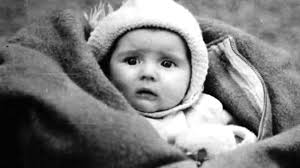
John and Betty Stam
The anticipated knock at the door came suddenly. The rumors were true. The Communists had arrived to arrest them.
John and Betty Stam had met each other in a prayer meeting for China. Their friendship grew into love, but their applications for mission work put them in different corners of the country. Believing God’s work should come before human affection, they committed the matter to the Lord. Through a series of events, Betty ended up in Shanghai, the very place John had been stationed. Within two years, they were engaged, married, and had a newborn baby, beautiful little Helen.
On this particular day, a loud knock came at the door, signifying the Communists’ arrival. Although they had been warned, it was too late for the Stams to flee. The Communists barged into their home, demanded all their money, bound John, and took him to their headquarters. They later came back for Betty and baby Helen.
In a letter which John was allowed to write to China Inland Mission, he said, “We were too late. The Lord bless and guide you. As for us, may God be glorified, whether by life or by death.”
Taken twelve miles on foot to Miashea, the location for their execution, the Stams spent the night in the home of a wealthy man who had fled to safety. John was chained that night, but Betty was given enough freedom to tend to the baby. The next morning, they were led to the execution site. When asked by the postmaster where they were going, John replied, “I don’t know where they are going, but we are going to heaven.” They were both executed by beheading in front of a terrified crowd.
The Christians in the city fled to the mountains and stayed in hiding for two days. A Chinese evangelist, Mr. Lo, ventured back into town, but the people were too fearful to tell him who had been executed. After much effort, he discovered it was the very missionaries he had been working with and that their baby had been left behind.
Mr. Lo searched the house where the Stams had spent that last night. It had been ransacked, but during his search he heard a soft cry. Baby Helen had been left in a sleeping bag by her mother along with a few supplies and ten dollars. That money was used to finance the trip that carried her to safety. Helen was taken to a missionary in another city, and today she lives in the US with her husband and family.

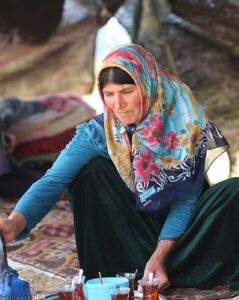
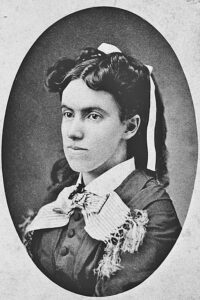
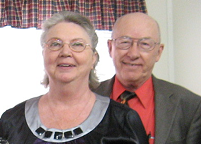 On May 10, 1968, the pastor’s wife and another lady from Beacon Hill Baptist Church in Dallas, Texas, were visiting new arrivals in their area. The house they planned to visit had whiskey bottles in the front window. The intended message was “Bad people live here; don’t mess with them.” The residents, Robert and Linda Huddleston, had bought the house and recently moved in. They had met at the Player’s Lounge where Linda was a bartender. The church ladies considered skipping this house, but they didn’t. Instead they won Bob and Linda to Christ!
On May 10, 1968, the pastor’s wife and another lady from Beacon Hill Baptist Church in Dallas, Texas, were visiting new arrivals in their area. The house they planned to visit had whiskey bottles in the front window. The intended message was “Bad people live here; don’t mess with them.” The residents, Robert and Linda Huddleston, had bought the house and recently moved in. They had met at the Player’s Lounge where Linda was a bartender. The church ladies considered skipping this house, but they didn’t. Instead they won Bob and Linda to Christ!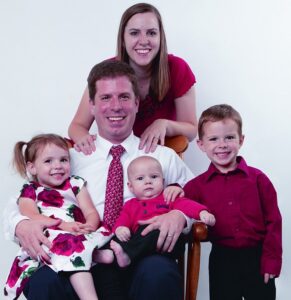
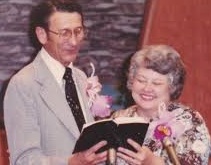
 After Maude Cary heard of the heathen in Morocco, no physical or spiritual trial could deter her from joining the missionary work in North Africa. Just before her twenty-third birthday, Maude and four other co-workers embarked for Morocco with the promise to spend their life’s energies evangelizing the Muslims and Berbers. As they departed, they sang, Anywhere with Jesus I can safely go; Anywhere He leads me in this world below; Anywhere without Him dearest joys would fade; Anywhere with Jesus I am not afraid. Surely there would be opposition and heartaches, but Maude thought only of exciting campaigns to bring the gospel to wild tribes!
After Maude Cary heard of the heathen in Morocco, no physical or spiritual trial could deter her from joining the missionary work in North Africa. Just before her twenty-third birthday, Maude and four other co-workers embarked for Morocco with the promise to spend their life’s energies evangelizing the Muslims and Berbers. As they departed, they sang, Anywhere with Jesus I can safely go; Anywhere He leads me in this world below; Anywhere without Him dearest joys would fade; Anywhere with Jesus I am not afraid. Surely there would be opposition and heartaches, but Maude thought only of exciting campaigns to bring the gospel to wild tribes!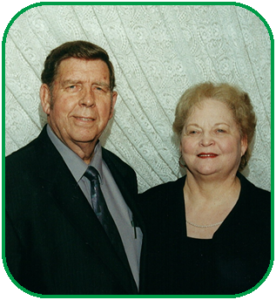 “A missionary who truly wants to see the gospel flourish and spread on the foreign field will work toward the end of seeing nationals won to the Lord and trained for the ministry to reach their own people.”
“A missionary who truly wants to see the gospel flourish and spread on the foreign field will work toward the end of seeing nationals won to the Lord and trained for the ministry to reach their own people.”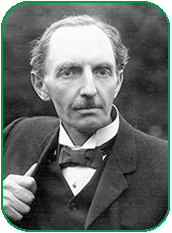 The son of a wealthy British planter, C.T. Studd accepted Christ at the age of 16. He lived the next several years in selfish pleasure and fame. An outstanding cricket player, he became captain of his team his last year at Trinity College, Cambridge. In 1882, Studd heard the preaching of Moody and began to be burdened for lost souls around him. However, it wasn’t until 1884, when his brother took seriously ill, that Studd was faced with the question, “What is all the fame and flattery worth … when a man comes to face eternity?” He made a decision and later wrote: “I knew that cricket would not last, and honour would not last, and nothing in this world would last, but it was worthwhile living for the world to come.”
The son of a wealthy British planter, C.T. Studd accepted Christ at the age of 16. He lived the next several years in selfish pleasure and fame. An outstanding cricket player, he became captain of his team his last year at Trinity College, Cambridge. In 1882, Studd heard the preaching of Moody and began to be burdened for lost souls around him. However, it wasn’t until 1884, when his brother took seriously ill, that Studd was faced with the question, “What is all the fame and flattery worth … when a man comes to face eternity?” He made a decision and later wrote: “I knew that cricket would not last, and honour would not last, and nothing in this world would last, but it was worthwhile living for the world to come.”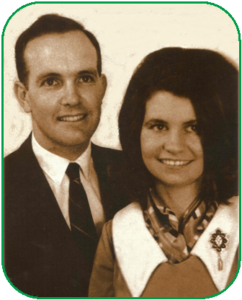 Born in 1941 in Duncan, Oklahoma, Thomas Laymon Sloan, M.D., grew up during the post-depression years. His unbelieving father permitted Tom’s mother to take him to church regularly. He was saved at age seventeen when a pastor led him to the Lord. Tom was a quiet but radical young man, criticized by some as an eccentric fanatic. He graduated as a pediatrician and planned to enter the medical field, until God changed his plans.
Born in 1941 in Duncan, Oklahoma, Thomas Laymon Sloan, M.D., grew up during the post-depression years. His unbelieving father permitted Tom’s mother to take him to church regularly. He was saved at age seventeen when a pastor led him to the Lord. Tom was a quiet but radical young man, criticized by some as an eccentric fanatic. He graduated as a pediatrician and planned to enter the medical field, until God changed his plans. “Should I tell you I do seriously think of leaving my native dwelling, my friends and companions for ever; would you upbraid me?” Harriet Atwood asked her sister in a letter. “[God] now offers me an opportunity of visiting the Heathen.” She then poured out the great conflict of her heart—the choice between living a normal life at home among friends or accepting the proposal of Samuel Newell, an aspiring missionary. Samuel was bound for India with Adoniram Judson; and in the year 1811, a life of missions was practically exile.
“Should I tell you I do seriously think of leaving my native dwelling, my friends and companions for ever; would you upbraid me?” Harriet Atwood asked her sister in a letter. “[God] now offers me an opportunity of visiting the Heathen.” She then poured out the great conflict of her heart—the choice between living a normal life at home among friends or accepting the proposal of Samuel Newell, an aspiring missionary. Samuel was bound for India with Adoniram Judson; and in the year 1811, a life of missions was practically exile.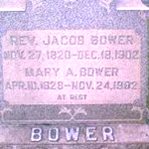 Jacob Bower was born to Christian parents who practiced regular morning and evening worship. His mother died when he was only six. The desire to see her in Heaven and the belief that only good people go there caused Jacob to live a virtuous life. But at age nineteen, he was influenced by Universalism which taught that God would save everyone. He later wrote, “I came to the conclusion that, if all the world are to be saved, I certainly would be included, therefore I was sure of salvation.” This false doctrine caused him to throw off his conviction of sin and spend five years in drunkenness and immorality.
Jacob Bower was born to Christian parents who practiced regular morning and evening worship. His mother died when he was only six. The desire to see her in Heaven and the belief that only good people go there caused Jacob to live a virtuous life. But at age nineteen, he was influenced by Universalism which taught that God would save everyone. He later wrote, “I came to the conclusion that, if all the world are to be saved, I certainly would be included, therefore I was sure of salvation.” This false doctrine caused him to throw off his conviction of sin and spend five years in drunkenness and immorality.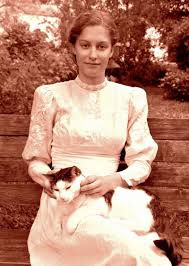 In 1887, Amy Carmichael heard the founder of China Inland Mission (Hudson Taylor) speak, and her life was never the same. Born in 1867, the oldest of seven, she grew up in privilege. Her father, a mill owner, provided a comfortable living, and she spent much of her childhood gleefully riding her pony along the shores of Northern Ireland. Her family attended the Presbyterian church where she received Bible training, but it was an encounter with a poor elderly woman that caused Amy to consider her Christian walk. As she stopped after church to help the woman with a heavy bundle, the Holy Spirit reminded her, “Every man’s work shall be made manifest…it shall be revealed by fire…” (1 Corinthians 3:13). Gold, silver, and precious stones or wood, hay, and stubble—was she building that which would last for all eternity? This question haunted her. She spent the rest of the day alone with God, and when she emerged, her life had a new purpose.
In 1887, Amy Carmichael heard the founder of China Inland Mission (Hudson Taylor) speak, and her life was never the same. Born in 1867, the oldest of seven, she grew up in privilege. Her father, a mill owner, provided a comfortable living, and she spent much of her childhood gleefully riding her pony along the shores of Northern Ireland. Her family attended the Presbyterian church where she received Bible training, but it was an encounter with a poor elderly woman that caused Amy to consider her Christian walk. As she stopped after church to help the woman with a heavy bundle, the Holy Spirit reminded her, “Every man’s work shall be made manifest…it shall be revealed by fire…” (1 Corinthians 3:13). Gold, silver, and precious stones or wood, hay, and stubble—was she building that which would last for all eternity? This question haunted her. She spent the rest of the day alone with God, and when she emerged, her life had a new purpose.
 “Dr. Becker, I recognize that fellow! He has a bad reputation. You shouldn’t trust him out of your sight!”
“Dr. Becker, I recognize that fellow! He has a bad reputation. You shouldn’t trust him out of your sight!”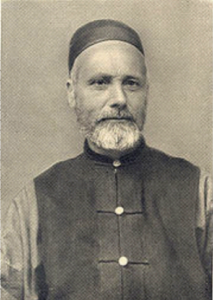 “Finding his contact with civilization was hindering him in his strenuous efforts to master the Mongolian language, he resolved…to persuade some Mongolian to receive him as an inmate of his tent…Gilmour feared nothing, but strode cheerfully over the plain making for the first tent he saw on the horizon.”1
“Finding his contact with civilization was hindering him in his strenuous efforts to master the Mongolian language, he resolved…to persuade some Mongolian to receive him as an inmate of his tent…Gilmour feared nothing, but strode cheerfully over the plain making for the first tent he saw on the horizon.”1 “I shall never go into the ministry until God takes me by the scruff of the neck and throws me in.” Most Christians would be surprised to know that these words were spoken by Oswald Chambers, author of the devotional book “My Utmost for His Highest.”
“I shall never go into the ministry until God takes me by the scruff of the neck and throws me in.” Most Christians would be surprised to know that these words were spoken by Oswald Chambers, author of the devotional book “My Utmost for His Highest.”